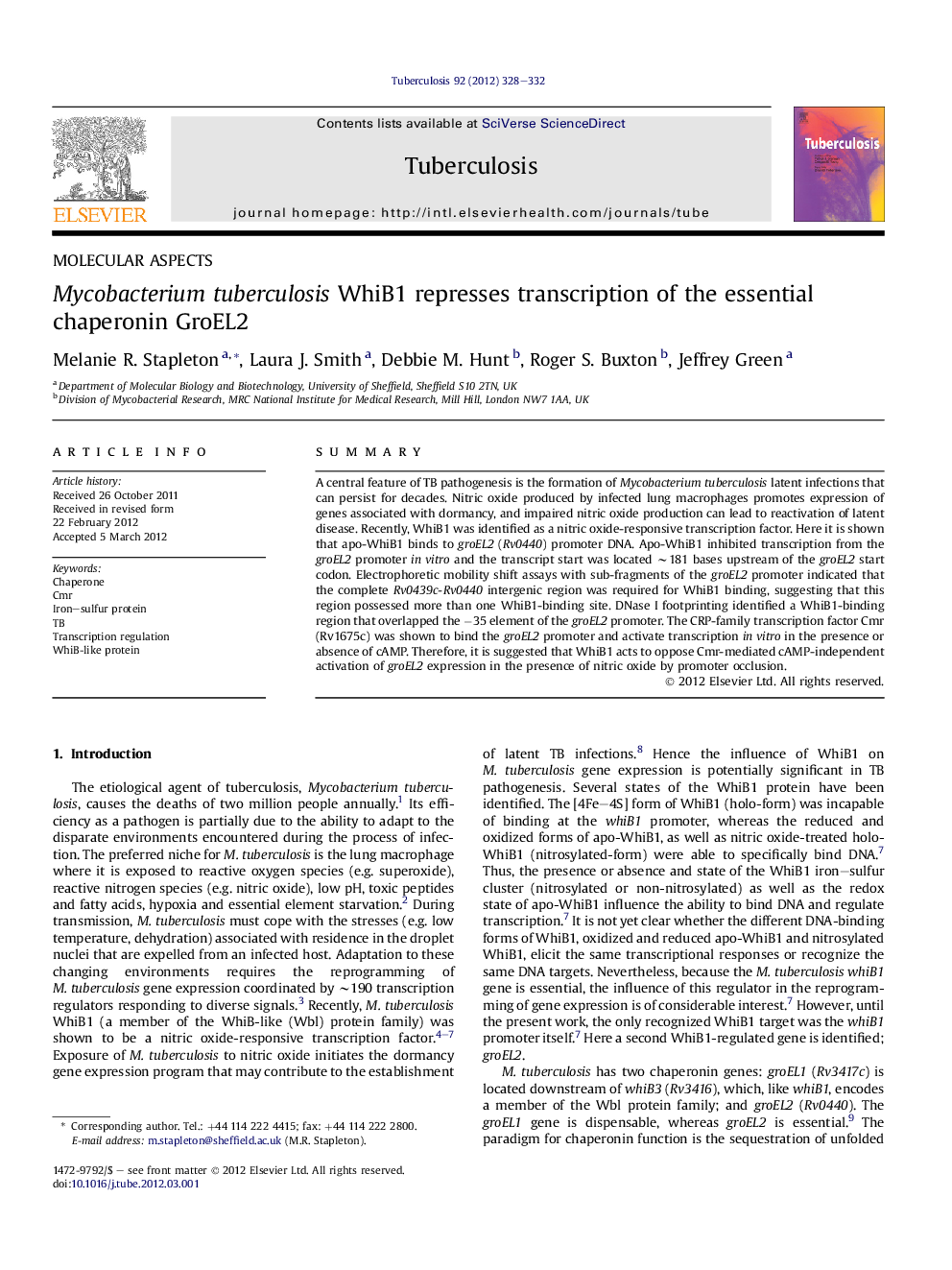| Article ID | Journal | Published Year | Pages | File Type |
|---|---|---|---|---|
| 10962254 | Tuberculosis | 2012 | 5 Pages |
Abstract
A central feature of TB pathogenesis is the formation of Mycobacterium tuberculosis latent infections that can persist for decades. Nitric oxide produced by infected lung macrophages promotes expression of genes associated with dormancy, and impaired nitric oxide production can lead to reactivation of latent disease. Recently, WhiB1 was identified as a nitric oxide-responsive transcription factor. Here it is shown that apo-WhiB1 binds to groEL2 (Rv0440) promoter DNA. Apo-WhiB1 inhibited transcription from the groEL2 promoter in vitro and the transcript start was located â¼181 bases upstream of the groEL2 start codon. Electrophoretic mobility shift assays with sub-fragments of the groEL2 promoter indicated that the complete Rv0439c-Rv0440 intergenic region was required for WhiB1 binding, suggesting that this region possessed more than one WhiB1-binding site. DNase I footprinting identified a WhiB1-binding region that overlapped the â35 element of the groEL2 promoter. The CRP-family transcription factor Cmr (Rv1675c) was shown to bind the groEL2 promoter and activate transcription in vitro in the presence or absence of cAMP. Therefore, it is suggested that WhiB1 acts to oppose Cmr-mediated cAMP-independent activation of groEL2 expression in the presence of nitric oxide by promoter occlusion.
Related Topics
Life Sciences
Immunology and Microbiology
Applied Microbiology and Biotechnology
Authors
Melanie R. Stapleton, Laura J. Smith, Debbie M. Hunt, Roger S. Buxton, Jeffrey Green,
